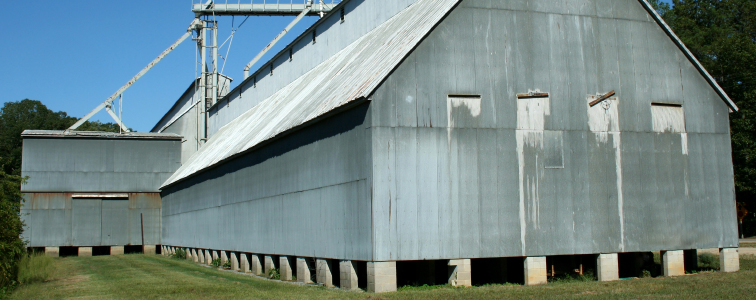NUTS! When Leadership Abandons Ethics in the Name of Profit
To our readers who lead or manage risk and behavior-based safety inside corporate America—from the top to front line employees, you as well as the rest of us, can’t pick up a newspaper or turn on the news these days without hearing about the salmonella problem originating in the Peanut Corporation of America’s plant in Georgia. It is tough not to think about it as you go to purchase a “nutrition” bar or pick up a handful of peanuts, or consider a piece of peanut butter pie. Hundreds of products have been recalled; at least 600 people in 43 states have been sickened and at least 9 deaths have been attributed to this source. Literally tons of food products have been thrown out of food banks, disaster relief centers and private homes in an effort to curtail the damage.
 As the story unfolds and the reports continue to emerge, the picture just gets worse. There is nothing comforting in learning of the working conditions at the plant, the complete lack of safe practices, the abysmal decisions of management that included shipping knowingly tainted products, and the deplorable physical environment in which peanut products, served daily to millions of Americans, have been manufactured. Now we know that another PCA-owned plant, this time in Texas, also has evidence of salmonella contamination. Whether or not tainted product was shipped from this plant is still in question. As reported in the New York Times (February 11, 2009), a former assistant plant manager of the Texas facility acknowledged a history of “cutting corners” and described it as a “disgusting plant.” A leaky roof allowed bird feces, among other contaminants, to get into the plant. The leaky roof was presumably not discovered because infrequent inspections occurred on dry days.
As the story unfolds and the reports continue to emerge, the picture just gets worse. There is nothing comforting in learning of the working conditions at the plant, the complete lack of safe practices, the abysmal decisions of management that included shipping knowingly tainted products, and the deplorable physical environment in which peanut products, served daily to millions of Americans, have been manufactured. Now we know that another PCA-owned plant, this time in Texas, also has evidence of salmonella contamination. Whether or not tainted product was shipped from this plant is still in question. As reported in the New York Times (February 11, 2009), a former assistant plant manager of the Texas facility acknowledged a history of “cutting corners” and described it as a “disgusting plant.” A leaky roof allowed bird feces, among other contaminants, to get into the plant. The leaky roof was presumably not discovered because infrequent inspections occurred on dry days.
Much of the outrage at this time is focused on the Federal Government, specifically the Food and Drug Administration. The FDA is the government entity that most Americans see as behind the regulations designed to keep us safe from harm with respect to food and drugs. Unfortunately the investigation into this outbreak is quickly revealing serious holes in the safety net with regard to food safety. The Obama administration has called for a top to bottom review of procedures at the FDA and several legislative committees are looking into increasing regulations.
While these reports are spurring legislation, and increased oversight is not a bad thing, the inside-outside role of regulation does not necessarily ensure us of safe practices and, in its required but burdensome processes, the fast fix we need is often unavailable. External oversight is required to anticipate need (as in safety audits of equipment, ventilation, quality spot checks, roofing and routine reviews of stability of the buildings, and other processes) or to address a failure in a manner to better ensure it does not happen again. Without oversight, it is unclear just how much internal effort is placed on fixing a problem—and as we can see from the Georgia example, almost nothing was done to prevent this calamity. However, regulation-driven improvements are complex, may lead to few or no new individual habits forming (personal performer changes), and offer most often longer term solutions to problems that need to be addressed immediately.
 The conditions in Georgia and Texas beg the question: How safe IS our food? Are the plants in Georgia and Texas true outliers, the exceptions that prove the rule? Did conditions at these plants spin out of control in a way that never happens in other companies? Or, is it possible that the conditions existing at the Peanut Corporation of America’s plants are not so unusual?
The conditions in Georgia and Texas beg the question: How safe IS our food? Are the plants in Georgia and Texas true outliers, the exceptions that prove the rule? Did conditions at these plants spin out of control in a way that never happens in other companies? Or, is it possible that the conditions existing at the Peanut Corporation of America’s plants are not so unusual?
Fundamentally, the situation originating at the Peanut Corporation’s plant in Georgia came about through the behavior of people; through the decisions that were made on how much to invest in building repair and maintenance costs; decisions regarding hiring practices and employee compensation; decisions re investing in employee training programs; decisions to update equipment or not; decisions regarding the exercise of moral, ethical and legal responsibility to report findings of tainted products; decisions to act on behalf of the Peanut Industry, numerous consumer companies, and the American People – or not. Decisions were made up and down the chain resulting in the disaster that is still unfolding.
The control for good practices and outcomes rests, not in regulatory oversight, but in business owners putting safety and people first always. Management policing itself only works as well as the learning histories of employees at every level of authority who bring to the workplace well-learned (at habit strength; internalized) ethical rules of conduct and a clear pattern of consequences for managing themselves and others consistently to demonstrate those rules. In turn, companies as entities need a visible code of ethical behavior—measured and recognized, with strong positive consequences when anyone speaks up or addresses a problem that may work against an immediate company gain. Such actions must be recognized systematically, in incredibly subtle and overt ways, as highly desirable patterns of behavior for the benefit of all (shutting down work when a problem is uncovered, spending the necessary resources to fix the problem, starting up only when safety is assured).
All companies can become better stewards of their public and private trust, arranging conditions so that safe practices do not depend on personal attributes only but on building in and teaching ethically-driven workplace practices—through behaviorally-anchored safeguards and safety skills training at the critical levels of accountability throughout the company—including the CEO to the new worker on the shop floor.
We should never have to rely on the weather to allow inspectors to detect the leaky roof at a food processing plant. Responsibility for food safety in our country ultimately lies with company leaders who exercise their responsibility for arranging conditions in which every employee is free to speak openly about safety concerns; where everyone plays a role in putting safety first.
Ethical business practices are defined as actions measured against an externally determined, culturally relevant standard for what is ethical, sustained by well monitored internal consequences. Not simple, really, and requiring constant vigilance. Learning to set these conditions in place and sustain them involves understanding behavior—and how to cascade ethical processes and behaviors of employees, from top to bottom.
To learn more about how to address these complex ethical and cultural, operational, leadership, and other behavior practices that affect safety outcomes, contact ADI. A combination of looking at how you better ensure ethical decision-making and how you ensure more accountability in safe performance will give you a head start in avoiding the problems of the slippery slope of neglect and abuse. You must understand the controlling power of self- or corporate-interest (most often for financial gain or company survivability). These pushes and pulls can affect the best, the most honorable of us if we don’t step back and learn how to arrange conditions to better ensure business success and ethical oversight, protecting the wellbeing of all.


